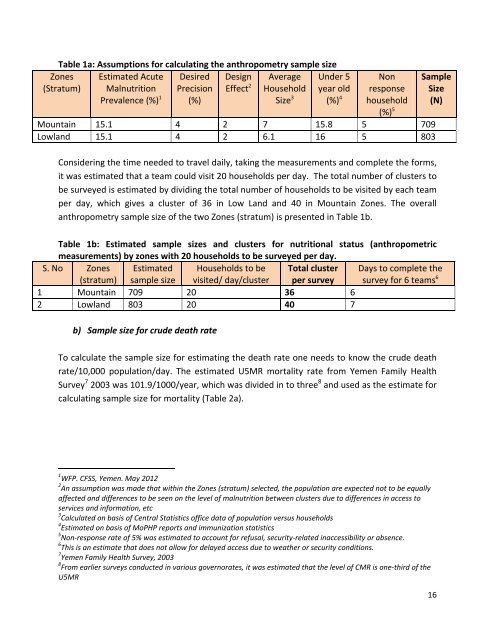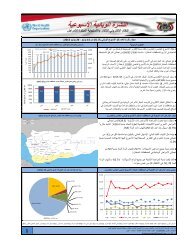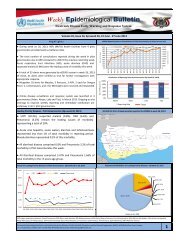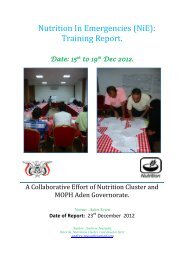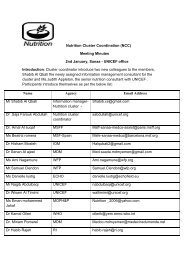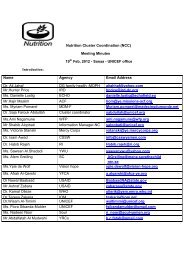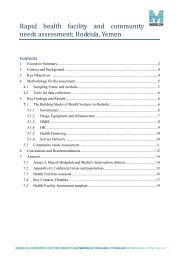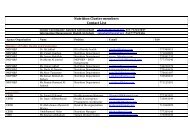Download - Yemen Humanitarian Response | YEMEN
Download - Yemen Humanitarian Response | YEMEN
Download - Yemen Humanitarian Response | YEMEN
Create successful ePaper yourself
Turn your PDF publications into a flip-book with our unique Google optimized e-Paper software.
Under 5 Non SampleTable 1a: Assumptions for calculating the anthropometry sample sizeZones Estimated Acute Desired Design AveragePrevalence (%) 1 (%)Size 3 (%) 4 household (N)(%) 5(Stratum) Malnutrition Precision Effect 2 Household year old response SizeMountain 15.1 4 2 7 15.8 5 709Lowland 15.1 4 2 6.1 16 5 803Considering the time needed to travel daily, taking the measurements and complete the forms,it was estimated that a team could visit 20 households per day. The total number of clusters tobe surveyed is estimated by dividing the total number of households to be visited by each teamper day, which gives a cluster of 36 in Low Land and 40 in Mountain Zones. The overallanthropometry sample size of the two Zones (stratum) is presented in Table 1b.Table 1b: Estimated sample sizes and clusters for nutritional status (anthropometricmeasurements) by zones with 20 households to be surveyed per day.S. No Zones(stratum)Estimatedsample sizeHouseholds to bevisited/ day/clusterTotal clusterper surveyDays to complete thesurvey for 6 teams 61 Mountain 709 20 36 62 Lowland 803 20 40 7b) Sample size for crude death rateTo calculate the sample size for estimating the death rate one needs to know the crude deathrate/10,000 population/day. The estimated U5MR mortality rate from <strong>Yemen</strong> Family HealthSurvey 7 2003 was 101.9/1000/year, which was divided in to three 8 and used as the estimate forcalculating sample size for mortality (Table 2a).1 WFP. CFSS, <strong>Yemen</strong>. May 20122 An assumption was made that within the Zones (stratum) selected, the population are expected not to be equallyaffected and differences to be seen on the level of malnutrition between clusters due to differences in access toservices and information, etc3 Calculated on basis of Central Statistics office data of population versus households4 Estimated on basis of MoPHP reports and immunization statistics5 Non-response rate of 5% was estimated to account for refusal, security-related inaccessibility or absence.6 This is an estimate that does not allow for delayed access due to weather or security conditions.7 <strong>Yemen</strong> Family Health Survey, 20038 From earlier surveys conducted in various governorates, it was estimated that the level of CMR is one-third of theU5MR16


